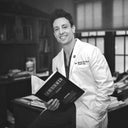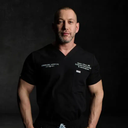It appears that your primary issue is skin laxity. The treatment of choice for skin laxity is an abdominoplasty. My guess is that your subcutaneous fat layer, or the layer of fat between your skin and muscles, is quite thin. Regardless of the equipment used (laser lipo, VASER or traditional liposuction) or brand name, liposuction will give limited results. CoolSculpting will give significantly limited results. Your best option is most likely to either accept your body and know that your children were worth the sacrifice or undergo an abdominoplasty. The fullness of the upper part of your rib cage below your breasts is because of a skin attachment. Our bodies have areas where our skin is attached to our muscle layers with connective fibers. One of those is at the lower part of the rib cage. When people have skin laxity, the skin will drop with gravity and pile up or bunch up at the skin attachment. If you take your finger and move the skin up and down on that area on your rib cage, you will notice that the skin moves down to a certain point but not below that point. That is where the skin attachments are. The only way to eliminate that crease is to cut those skin attachments, which is typically done during an abdominoplasty if the procedure is done correctly. We have the same type of skin attachments on the back. That is what creates the crease or fold on the back for many women. As the arm is lowered, the skin drops, and the skin folds over the skin attachments, and the crease forms. Please see the attached link to my website and look at the patient in the right lower corner. The fullness on her lower rib cage would never be addressed unless the skin attachments were cut during her abdominoplasty. If, by chance, you choose to have an abdominoplasty in the future and are concerned about the fullness of the lower rib cage, make sure you bring this to your plastic surgeon's attention and insist that they go up high enough to release the skin attachments. Otherwise, the fullness in that area will still be there after the procedure. Best of luck,Mats Hagstrom, M.D.


